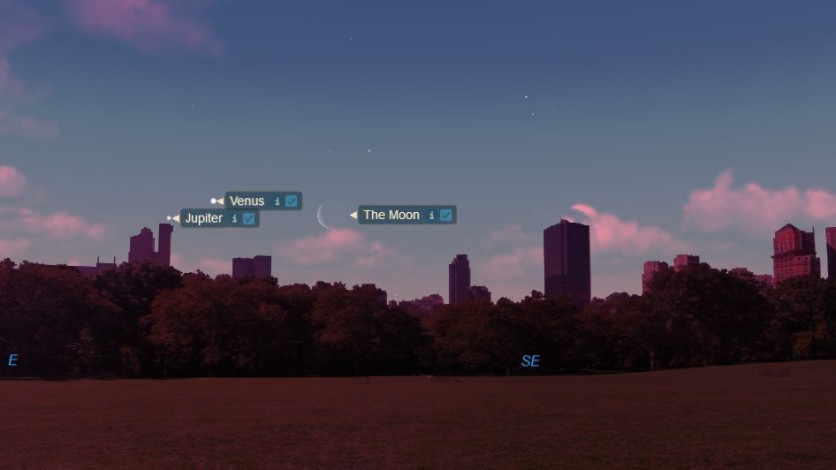For one special morning, the Moon, Venus, and Jupiter will all meet for one spectacular moment before the sun rises in the sky.

Two planets kissing, One Moon watching
Viewers will have to wake up early before the day rolls in to welcome the dazzling display of the brightest objects in the night sky, which will be visible on the morning of April 26.
To ensure that you do not miss the display, you will have to set your alarm about 45 minutes before sunrise. For better viewing, you will have to look low toward the east-southeast horizon.
From that location, you will find the brightest planet Venus hovering four degrees to the upper right of Jupiter. For about a dozen degrees away from Jupiter's right, you will find a waning crescent moon that is seemingly overlooking the two mingling planets from afar.
According to Space.com, on the next morning of April 27, before the sunrise as well, there will be a "slightly thinner lunar crescent" moon that has moved in to join the two planets, which forms a stunning triangle formation of these three bright objects.
It is worth noting that the moon-Jupiter side will measure four degrees, Venus and Jupiter will seemingly kiss each other, for they will have closed the gap between them to just three degrees, and the moon-Venus side will only measure to five degrees.
"Illusion of perspective"
Joe Rao, the skywatching columnist of Space.com, noted that these three objects mingling with each other is of course just an "illusion of perspective." Venus and Jupiter are nowhere near the vicinity of each other since they only happen to align from Earth's vantage point.
Venus at that point will be about 90.3 million miles or 145.4 million kilometers away from our planet, while Jupiter is almost six times further away from us at 530 million miles (852.8 km). But the moon, on the other hand, is the closest object to us at only 239,000 miles (384,000 km) away.
Make sure that for better viewing, there are no buildings, trees, or any huge obstructions blocking the east-southeast portion of this sky. A clear and open morning sky would make this triangular trip a fascinating spectacle to start up one's day.
"I suspect the combination of the objects' great brightness, their closeness to one another and their low altitude will induce more than a few people to call local media outlets and maybe even police stations to report a UFO sighting," said Rao.
"Closer than ever"
However, on April 30, Saturday morning, Venus and Jupiter will be closer than ever since they will only be separated by just one-half degree, which in perspective is similar to the apparent width of the moon. Together, the planets will rise side-by-side, with Venus on the right side and Jupiter on the left.
Venus will be notably brighter because its magnitude will be at -4.1 but Jupiter will shine six times brighter since it will have a magnitude of -2.1.
Telescopes and binoculars are highly suggested in order to enjoy the spectacular views in its full glory, in the coming days around April 30. The two planets will still be close to each other by May 1 on Sunday because Jupiter will be located to the upper right of Venus until in the next mornings to come, the planets will slowly pull away to the west.
Mark your dates, set your alarms, and make your mornings magnificent with these stunning celestial displays!
Related Article : China's Venus Mission Similar To NASA's Mars Visit! New Space Race To Find Other Life Forms Now Starting
This article is owned by Tech Times
Written by Joaquin Victor Tacla




